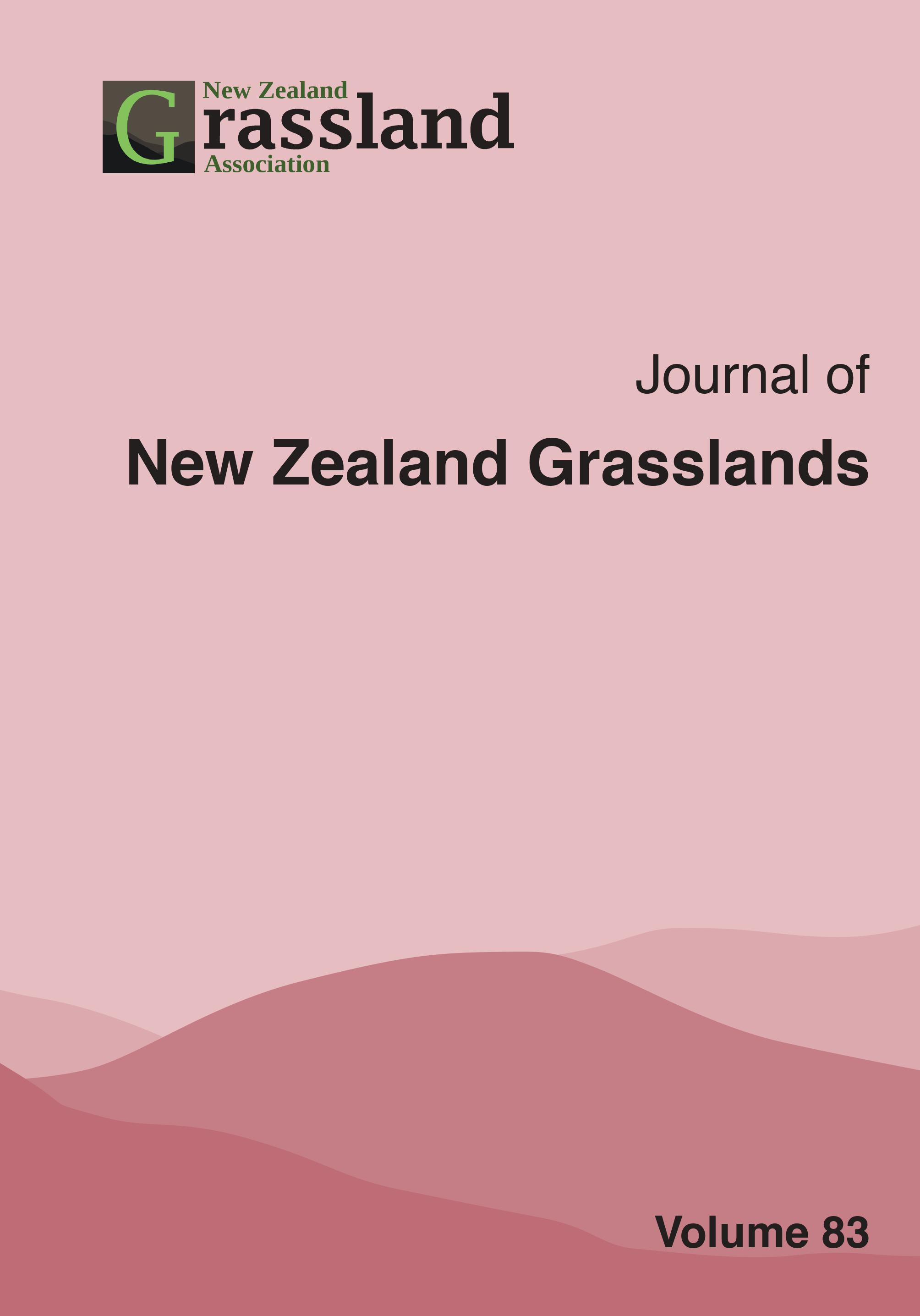Response of white clover cultivars to sheep and beef cattle grazing management across three pastoral environments in New Zealand.
DOI:
https://doi.org/10.33584/jnzg.2021.83.3491Abstract
White clover (Trifolium repens L.) is the main legume component in temperate perennial pasture swards in New Zealand. Developing broadly adapted cultivars is an important objective in white clover breeding programs. Field trials across years, seasons, locations and grazing environments, help breeders select superior material, and assess the merit of new cultivars available to farmers. This paper is based on results from analysis of data from field trials across three locations in New Zealand: Kerikeri (cattle grazed), Palmerston North (cattle grazed) and Lincoln (sheep grazed), evaluating 44 experimental varieties and 16 cultivars for seasonal growth and leaf size. We report on performance of the 16 cultivars across the three locations.
Significant genotype-by-environment interactions were estimated for seasonal growth and leaf size. The importance of conducting multi-location and year evaluation trials under cattle and sheep grazing management methods (rotational/set stocking) was demonstrated. Among the 16 cultivars, Legacy showed above average performance across all 3 locations. Hilltop when compared among similar leaf size material, showed above average seasonal growth across years under rotational sheep grazing management during the first 4 years of the trial at Lincoln. Hilltop also showed above average seasonal growth under set socking with sheep in years 5 and 6 at Lincoln.
Downloads
Downloads
Published
How to Cite
License

This work is licensed under a Creative Commons Attribution-ShareAlike 4.0 International License.
Copyright
This work is licensed under a Creative Commons Attribution-Non Commercial-NoDerivatives 4.0 International License. Rights granted to the New Zealand Grassland Association through this agreement are non-exclusive. You are free to publish the work(s) elsewhere and no ownership is assumed by the NZGA when storing or curating an electronic version of the work(s). The author(s) will receive no monetary return from the Association for the use of material contained in the manuscript. If I am one of several co-authors, I hereby confirm that I am authorized by my co-authors to grant this Licence as their agent on their behalf. For the avoidance of doubt, this includes the rights to supply the article in electronic and online forms and systems.




